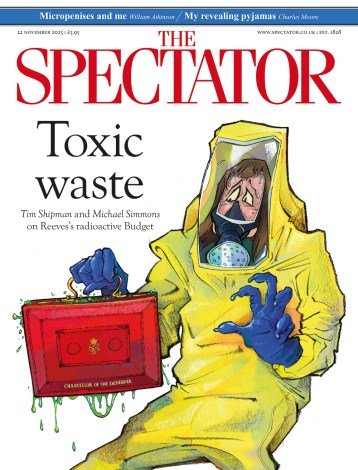Historically, British artists have not been good at money management. George Morland (1762–1804) was chronically insolvent; Benjamin Haydon (1786–1846) served four jail terms for debt and eventually killed himself after being reduced to pawning his spectacles; even Sir Thomas Lawrence (1769–1830) died leaving debts of £30,000. But the painter who turned serial defaulting into an art was George Chinnery (1774–1852). Absconding was the making of him as an artist suggests a new exhibition, The Flamboyant Mr Chinnery, at Asia House.
A Londoner and fellow student of Turner at the Academy Schools, Chinnery launched his portrait-painting career in Dublin four years before the Act of Union emptied the Irish Parliament of MPs, and his studio of sitters. In 1802, aged 28, he left his new Irish wife with two children under two and boarded an East Indiaman for Madras — the first of a lifelong succession of flits.
There was money to be made by artists in India. Zoffany had returned rich from his Indian escapade of the 1780s, and the Daniell brothers’ topographical engravings, admired by Turner, were selling like hot cakes. It didn’t take Chinnery long to establish himself as British India’s foremost portrait painter, after a summons to Calcutta in 1807 to paint a 60 sq. ft canvas of Sir Henry Russell, Chief Justice of Bengal, for the new Town Hall.
Meanwhile, his ‘fascinating ugliness’ and reputation as a wag and raconteur had made him a fixture on the social circuit. Expatriates queued to have their portraits taken in the style of his hero Sir Joshua Reynolds, backed by swags of vermilion drapery, classical columns and the occasional palm tree poking up exotically out of a blur of background vegetation. Despite criticism for his lack of attention to hands and feet, Chinnery was very good at faces, searching out character even in childish subjects such as the sultry Anglo–Indian ‘Kirkpatrick Children’. At his peak his prices topped Zoffany’s, but by 1814 he was deeply in debt.
Like Gainsborough, Chinnery was at heart a landscapist, and landscapes are the stars of this show. A moneymaking scheme for topographical prints of Indian monuments was quickly dropped in favour of vignettes of local colour: bathers in ghats, masula boatmen riding the surf and palanquin bearers relaxing between fares. When he did draw monuments it was from subversive angles — his view of a ‘Mosque in the New Road, Dacca’ is blocked by a tumbledown hovel. For Chinnery the East was a Mecca of the picturesque, the richer in romantic decay the further east he went.
In 1825 he did a bunk to Macau, leaving friends in India with 30,000 rupees of debt. (The running gag that he was escaping from his predatory wife, who had briefly caught up with him in Calcutta, made a more entertaining story.) Macau, described by a contemporary visitor from Baltimore as ‘one of the most romantic cities that imagination can picture’, was the perfect bolthole. From the wide sweep of its Praya Grande, with its curving row of fake-European façades like a stage set, to the crumbling grandeur of its Portuguese Baroque churches, Chinnery captured the romance of the place from every angle. But as in India, his main interest was in the local life: fishermen, gamblers, street traders and blacksmiths all provided action for his brush. His studies of itinerant barbers at their morning’s work — shaving heads, massaging scalps, plaiting queues, picking noses — are as keenly observed as Hokusai sketches, with more detail.
Portrait opportunities were fewer on the China coast but the subjects were more interesting, many of them adventurers like himself. The most intrepid was the blind globetrotter Lieutenant James Holman, captured in 1830 in Canton, where he smoked two pipes of opium at William Jardine’s and got a headache. But the most striking portraits are of Canton hong merchants Howqua and Mowqua, their Chinese teabowls, incense burners and lanterns set off by the obligatory classical column. There was a waxwork of Howqua at Madame Tussauds, but Chinnery’s much-copied image was more iconic.
Some portraits, like the charming pictures of Tanka boatwomen, were obviously painted for the tourist trade, others less obviously so. After two decades on the China coast Chinnery had himself become a visitor attraction, and his small self-portrait heads found an unlikely market as souvenirs. But the larger ‘Self-portrait of the artist at his easel’ (1845), shown seated before a painting of a Bengali ruin with a view of Macau’s Praya Grande on the wall behind him and a swag of trademark red drapery overhead, had a different function. The last painting Chinnery sent to the Academy, it is a memorial to a triumphant survivor, unpawned spectacles still defiantly on his nose.
When Chinnery died in Macau in 1852 at the ripe old age of 78, he had outlived most of his Academy Schools contemporaries and been able, from a safe distance, to maintain the boast that ‘there are not six at home who I would stand in awe of’. But although his oil paintings are a generation behind Turner’s, his sketches haven’t dated. His prediction to James Matheson that one of his sketchbooks ‘some 50 years hence may be interesting’ seems modest today.






Comments